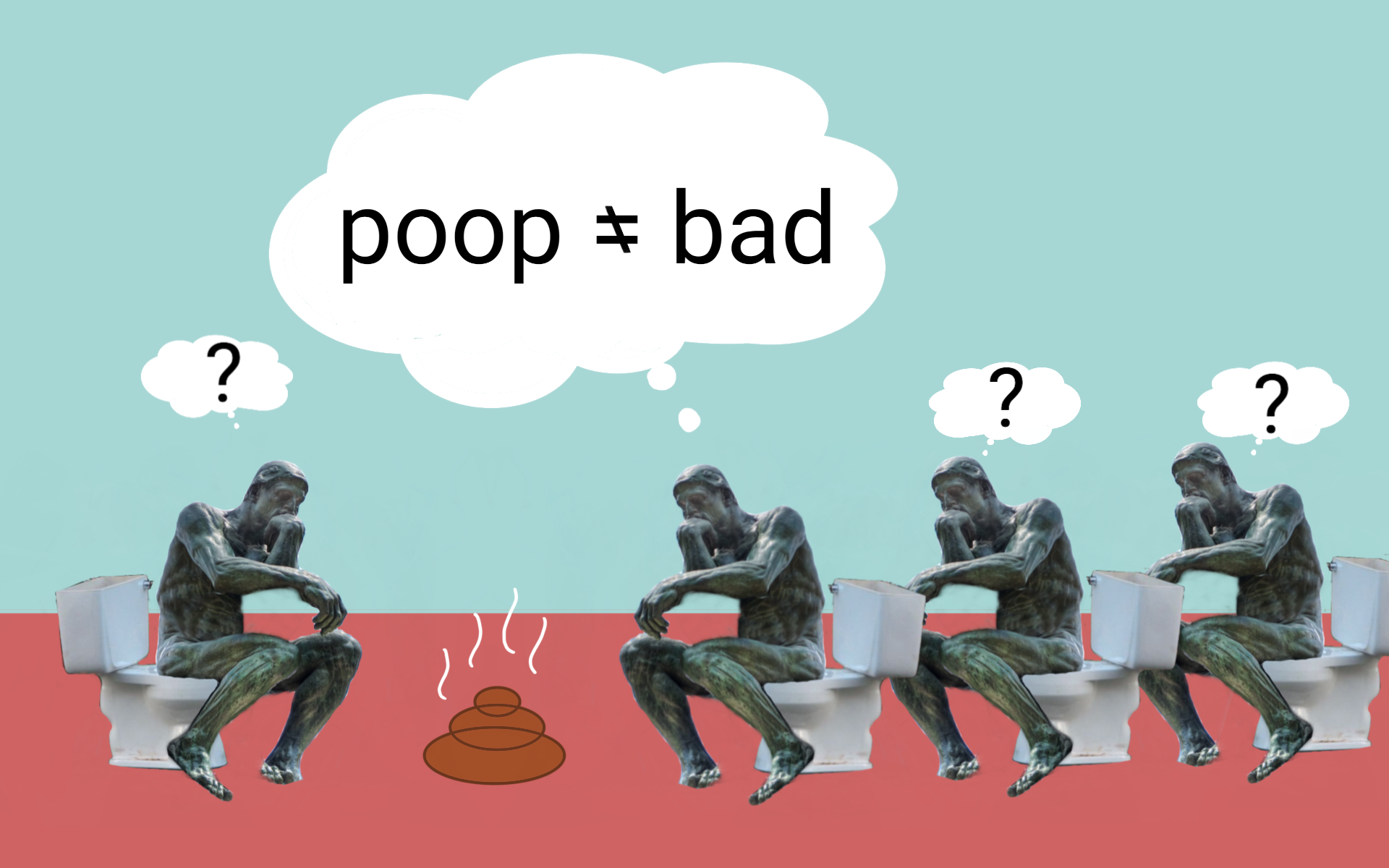Dispelling the poo taboo
Solving lingering sanitation issues around the world requires having a conversation about, you know...
Curtis Segarra • November 7, 2019

Poop is infiltrating pop culture, economics, and our psyche — and that’s a good thing. [Credit: Curtis Segarra, Joe deSousa and tingley, modified from Flickr | CC BY-NC 2.0 ]
We have a poop problem. Over 892 million people around the world still defecate out in the open, according to the United Nations. And in the United States, a lack of toilet access for the homeless persists. The issues are complex, but the solutions start with getting all of us to talk more about our poop, according to sanitation development expert Kimberly Worsham.
Worsham, who works in countries like Cambodia and India (her consulting firm is called FLUSH), is also trying to ease the cultural taboos surrounding toilet use. Those taboos get in the way of safety and health, she explains.
“Shit is sin,” Worsham says. In most human cultures, it falls into the same taboo category as sex and menstruation. And as a result, people forget how dangerous our waste is. At a recent community-outreach class at the Brooklyn Brainery event space, Worsham reminded us what is at stake.
Before sewers were invented, cholera, hepatitis, the plague, and parasites were rampant, there were terrible smells, and cesspits literally backfired when methane, the flammable gas produced when bacteria decomposes poop, occasionally exploded. But even today–over 5,000 years after the Harappans introduced toilets with drainage systems–two billion people worldwide do not have access to adequate sanitation, according to the World Health Organization.
“The tradition has been: build toilets and people will use them,” Worsham says, “but that doesn’t work.” Because the problem isn’t a lack of toilets, according to Worsham. The problem is that the sanitation industry only focuses on installation of the toilet–overlooking the cultural taboos that prevent toilet use.
In India, for example, a toilet can signify spiritual dirtiness. “They don’t want a toilet in their home because it’s dirty,” Worsham says. Some people have a toilet in their home but still won’t use it because of the cultural stigma. So solutions that increase comfort with toilets have to address these taboos, according to Worsham.
“I think it’s about reinventing people’s mindset about sanitation,” Worsham says. And in India, activists are working to change cultural perceptions.
“Toilet: Ek Prem Katha,” a movie that centers a drama around owning a toilet, and “Take the Poo to the Loo”, a music video about toilet use, are both part of the recent push for sanitation in India. These sorts of cultural advertisements can help engage would-be toilet users in discussion, Worsham says, because people respond to these kinds of messages.
If I were someone hesitant about toilet use, Worsham says, “I want someone to show me this is amazing–my life is so much easier!” And that kind of message doesn’t come with the installation of a toilet. It requires a cultural approach.
When we discuss toilet use openly, everyone is better off says Shawn Shafner, an activist working to open-up the conversation and move past toilets. “The toilet reinforces this idea that what comes out of us is waste,” Shafner says, even though poo has economic value as fertilizer. Removing the shame and taboo surrounding poo would be good for everyone because then we could better address poo-related health issues and develop ways to use our waste to grow our foods, he adds.
Right now, we have opportunities to talk about sanitation when we have conversations about global warming and water rights, Shafner says.
People are beginning to talk about sanitation and health when they discuss water crises, Worsham agrees. But ultimately, getting the public interested in toilet use comes down to culture and economics.
When someone who has never had a toilet is simply given one, they may be hesitant to use it because they didn’t want it in the first place, Worsham says. But if the sanitation industry can come up with better ways to market toilets so that a family actually wants to buy one, then it’s more likely that they will really use it, according to Worsham.
And coming up with new ways to market toilets and make toilet use seem cool requires more voices in the conversation on poo, Worsham says, so “don’t be shy about your ideas of how to make it better.”